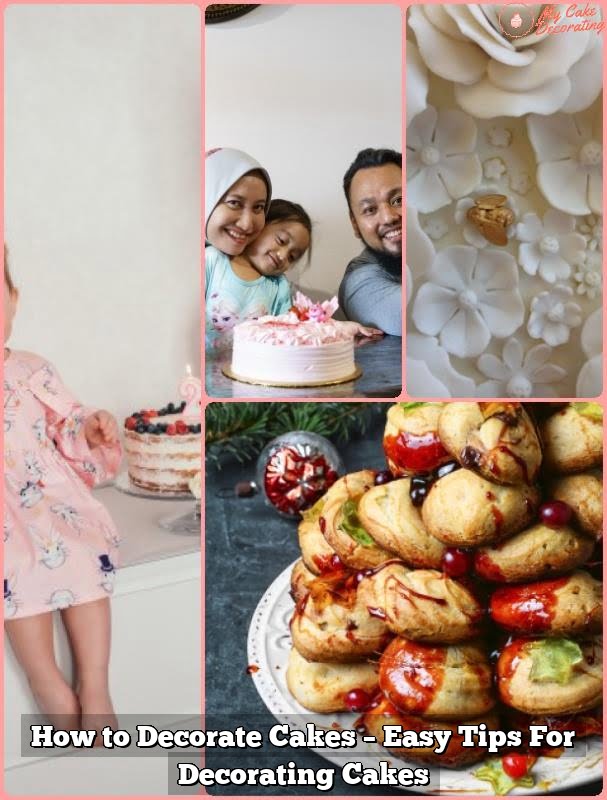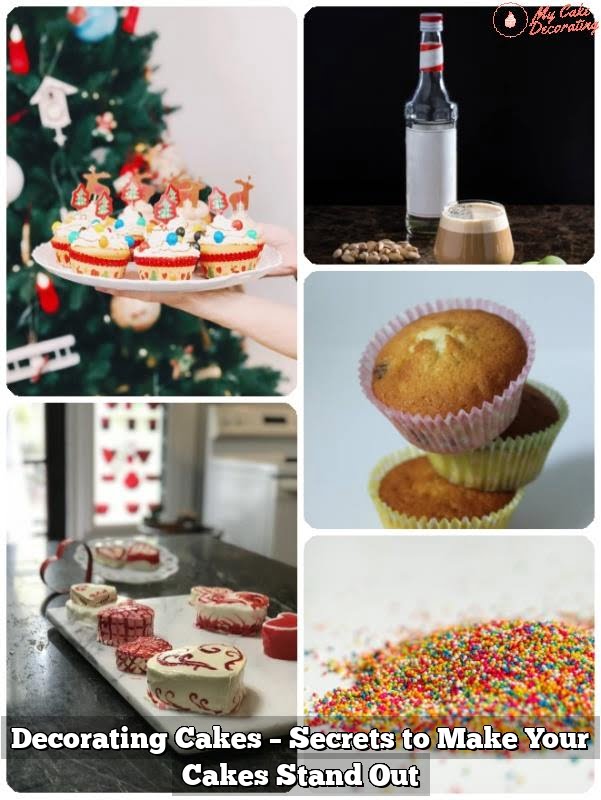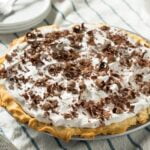Have you ever wondered what do you use to decorate cakes? Cake decorating is not just about making a cake look pretty, it’s an art form that allows for creativity and expression. Whether you’re a beginner or a seasoned baker, knowing the essential tools and techniques for cake decorating can take your creations to the next level.
Cake decorating involves a variety of tools and ingredients, from piping bags to edible decorations like fondant and buttercream flowers. In this article, we will explore the world of cake decoration, from basic techniques to advanced methods, as well as tips and tricks for perfecting your designs.
As we delve into the art of cake decorating, we will cover the essential tools needed for creating beautifully decorated cakes. From there, we will discuss both edible and non-edible decorations, including fondant, gum paste, fresh flowers, edible glitter, and more. Additionally, we’ll explore advanced techniques such as royal icing and airbrushing, as well as DIY decorations and current trends in cake decorating. So let’s dive into the wonderful world of cake decoration.
Essential Tools for Cake Decorating
When it comes to cake decorating, having the right tools can make all the difference in achieving stunning and professional-looking results. From piping bags to spatulas, here are some essential tools that every cake decorator should have in their arsenal.
Piping Bags and Tips
Piping bags are an indispensable tool for creating intricate designs and patterns on cakes. Whether you’re using buttercream, royal icing, or ganache, a good quality piping bag can help you achieve clean lines and precise decorations. Pair your piping bag with a variety of tips in different shapes and sizes to create everything from delicate flowers to intricate borders.
Offset Spatula
An offset spatula is another must-have tool for cake decorating. This long, narrow spatula with a bent handle is perfect for smoothly spreading and leveling frosting on cakes. It’s also great for cleanly lifting and moving delicate decorations without smudging or damaging them.
Turntable
A turntable is a game-changer when it comes to cake decorating. This revolving stand allows you to easily access all sides of the cake while keeping your decorating hand steady. A turntable makes it much easier to apply even layers of frosting and achieve smooth, professional-looking finishes.
These essential tools are just the beginning when it comes to cake decorating. By investing in high-quality equipment and regularly practicing your techniques, you’ll be well-equipped to create beautifully decorated cakes for any occasion.
Edible Decorations
When it comes to decorating cakes, one of the most important considerations is the use of edible decorations. These can elevate a cake from ordinary to extraordinary, adding both visual appeal and delicious flavor. There are several key ingredients and techniques that are commonly used in edible cake decorations.
Fondant is a versatile sugar paste that can be rolled out into a thin sheet and draped over cakes to create a smooth and flawless finish. It can also be molded and shaped into intricate designs, making it a popular choice for creating custom cake decorations. In addition to fondant, gum paste is another essential tool for cake decorators. This pliable sugar dough dries quickly and can be formed into delicate and realistic flowers, leaves, and other decorative elements.
Buttercream flowers are also a popular choice for cake decoration. Using a piping bag and various decorating tips, bakers can create stunning floral designs that not only look beautiful but also taste delicious. The versatility of buttercream allows for endless creativity in designing unique floral arrangements for cakes.
Incorporating these edible decorations into your cake decorating repertoire can take your creations to the next level, allowing you to craft stunning and delectable designs that will impress any crowd. Whether you prefer the smooth finish of fondant, the intricate detail of gum paste flowers, or the deliciousness of buttercream designs, there are endless possibilities for creating visually stunning and mouthwatering cakes.
Non-Edible Decorations
When it comes to decorating cakes, there are a wide variety of non-edible decorations that can take your creation to the next level. Fresh flowers are a popular choice for adding a touch of natural beauty to cakes. Just ensure that the flowers you choose are safe for consumption and free from pesticides.
Edible glitter is another fun and eye-catching option for decorating cakes. It comes in a range of colors and adds a touch of sparkle to any dessert. Sprinkles are also a classic choice for adding a pop of color and fun texture to cakes.
Fresh flowers, edible glitter, and sprinkles are versatile options that can be used on all types of cakes, from elegant wedding confections to whimsical birthday treats. They allow bakers and decorators to unleash their creativity and personalize their designs. Whether you prefer a minimalist look or something more extravagant, there’s a non-edible decoration out there for you.
Incorporating non-edible decorations into your cake designs allows you to experiment with different textures, colors, and shapes. These elements can elevate the overall aesthetic of your cake and make it truly stand out. When using these decorations, it’s important to consider the overall theme and style of the cake to ensure that everything complements each other cohesively.
| Non-Edible Decorations | Examples |
|---|---|
| Fresh Flowers | Roses, baby’s breath, peonies |
| Edible Glitter | Gold, silver, rainbow-colored glitter |
| Sprinkles | Rainbow jimmies, metallic dragees, confetti quins |
Advanced Techniques
Royal icing, airbrushing, and stenciling are advanced techniques that can take your cake decorating skills to the next level. These methods allow for intricate designs and professional-looking finishes that will impress anyone who sees your creations.
Royal Icing
Royal icing is a versatile decorating tool made from confectioners’ sugar and egg whites or meringue powder. It can be used to create delicate lace patterns, intricate piping designs, and even 3D decorations. Royal icing dries hard, making it perfect for creating structures like gingerbread houses or ornate details on wedding cakes.
Airbrushing
Airbrushing is a technique that uses an airbrush tool to spray food coloring onto the surface of a cake. This allows for smooth gradients, vibrant colors, and intricate detail work that is difficult to achieve by hand. From creating realistic landscapes to adding a metallic sheen to your cakes, airbrushing offers endless creative possibilities.
Stenciling
Stenciling involves using a stencil to apply designs or patterns onto the surface of a cake with either royal icing or powdered sugar. This technique allows for precise and consistent decoration, making it perfect for adding elegant borders, floral motifs, or intricate geometric patterns to your cakes.
Incorporating these advanced techniques into your cake decorating repertoire will open up a world of creative possibilities and elevate the presentation of your confections. Whether you are aiming to create stunning wedding cakes, show-stopping birthday treats, or simply want to enhance your baking skills, mastering royal icing, airbrushing, and stenciling will take your creations to the next level.
Tips and Tricks for Perfect Cake Decorations
Perfecting the art of cake decorating goes beyond just creating beautiful designs and decorations. Achieving a smooth frosting and sharp edges is essential in creating a professional-looking cake that not only tastes delicious but also impresses visually. Here are some tips and tricks to help you achieve flawless cake decorations.
Using the Right Tools
One of the key factors in achieving smooth frosting and sharp edges is using the right tools. A good quality offset spatula and a bench scraper are essential for achieving straight edges and smooth surfaces. Additionally, investing in a turntable can make the process much easier as it allows for effortless rotating and smoothing of the frosting.
Crumb Coating
Before applying your final layer of frosting, it’s important to do a crumb coat. A crumb coat is a thin layer of frosting applied to seal in any loose crumbs, preventing them from ruining your final decoration. Once you’ve applied the crumb coat, chill the cake in the refrigerator for about 15 minutes to allow the frosting to set before applying your final layer.
Technique Is Key
Practice makes perfect when it comes to achieving smooth frosting and sharp edges on cakes. Using consistent pressure while spreading the frosting and holding the spatula at a 45-degree angle can help create even layers and seamless finishes. It’s also important to work quickly before the frosting starts to set, ensuring a clean and polished look.
These tips and tricks, along with patience and practice, can help you master the art of achieving smooth frosting and sharp edges on your cakes. With these techniques in your repertoire, you’ll be able to create professional-looking cakes that are both visually stunning and delectable.
DIY Decorations
Creating your own cake toppers and decorative elements can add a personal touch to your cakes, making them truly unique and special. But what do you use to decorate cakes in this way? There are a variety of materials and techniques that you can use to craft DIY cake decorations, from simple fondant cutouts to elaborate sculpted figurines.
One popular material for creating DIY cake decorations is fondant, a pliable sugar paste that can be molded and shaped into various designs. Fondant can be colored, rolled out, and cut into shapes using cookie cutters or specialized fondant cutters. This versatile material is great for making decorative elements such as flowers, leaves, and other intricate details.
Another option for DIY cake decorations is gum paste, which is similar to fondant but dries harder and faster. Gum paste can be used to create delicate flowers, bows, and other three-dimensional decorations that will hold their shape on top of the cake. With the right tools and techniques, you can even sculpt realistic-looking figures and objects out of gum paste.
In addition to fondant and gum paste, some decorators also use modeling chocolate or marzipan to create unique cake toppers and decorative elements. These materials have different textures and workability compared to fondant and gum paste, allowing for a wider range of creative possibilities when it comes to crafting custom cake decorations.
| DIY Cake Decoration Materials | Description |
|---|---|
| Fondant | A pliable sugar paste that can be molded into various shapes for cake decoration. |
| Gum Paste | Similar to fondant but dries harder; great for creating delicate flowers, bows, and figurines. |
| Modeling Chocolate/Marzipan | Alternative materials with different textures for crafting custom cake decorations. |
Trends in Cake Decorating
In the world of cake decorating, trends come and go, and staying up to date with the latest styles is essential for any baker or pastry chef. Three popular trends that have been making waves in the cake decorating world are minimalist designs, geode cakes, and watercolor techniques.
Minimalist cakes are all about simplicity and elegance. These designs often feature clean lines, monochromatic color schemes, and understated decorations. In minimalist cake decorating, less is more, and every element serves a purpose without being excessive. This trend has gained popularity for its timeless appeal and versatility, making it suitable for various occasions from weddings to birthdays.
Another trend that has taken the cake decorating world by storm is the geode design. Inspired by the natural beauty of crystals and gemstones, geode cakes typically feature vibrant colors and intricate patterns that mimic the appearance of geological formations. This trend adds a touch of drama and opulence to any celebration, making it perfect for special events such as weddings or milestone birthdays.
On the other end of the spectrum, watercolor designs have also emerged as a popular choice for cake decorators. This technique involves blending different shades of edible food coloring to create a soft, ethereal effect reminiscent of watercolor paintings. Watercolor cakes often feature pastel hues and dreamy brushstrokes, adding a whimsical touch to any dessert table.
As these trends continue to evolve and captivate both bakers and clients alike, staying informed about the latest techniques and designs is crucial for anyone looking to make a statement with their cake decorations.
Conclusion
In conclusion, cake decorating is an art form that allows for endless creativity and personal expression. Whether you prefer traditional techniques or cutting-edge trends, the essential tools for cake decorating are what enable you to bring your vision to life. From piping bags to spatulas, these tools are the foundation of any successful cake decoration project.
When it comes to choosing decorations for your cakes, there is a wide range of options to consider. From edible decorations like fondant, gum paste, and buttercream flowers to non-edible options such as fresh flowers, edible glitter, and sprinkles, the possibilities are truly endless. Advanced techniques like royal icing, airbrushing, and stenciling can take your cake decorating skills to the next level and allow you to experiment with new styles and designs.
Ultimately, the key to successful cake decorating lies in finding your unique style and putting your own spin on traditional techniques and trends. With some creativity and a little bit of experimentation, you can create stunning cakes that reflect your individuality and artistic flair. No matter what tools or decorations you use to decorate cakes, remember that the most important thing is staying true to your own vision and letting your creativity shine through in every design.
Frequently Asked Questions
What Is Needed for Decorating a Cake?
Decorating a cake requires several key elements to ensure a beautiful and visually appealing final product. First and foremost, a well-prepared cake base is essential, as it provides the canvas for the decorations. Additionally, tools such as piping bags, spatulas, and fondant smoothers are needed to apply frosting and other decorative elements.
What Are the Materials Used in Decorating a Cake?
A variety of materials are used in decorating a cake, depending on the desired design and style. Common materials include frosting or icing in various colors, fondant for creating sculpted decorations, edible glitter or sprinkles for added sparkle, and food coloring to achieve custom color shades.
Other materials like marzipan, chocolate ganache, and edible flowers can also be used for more unique designs.
What Is the Name of Tool That Used to Decorate Cake?
The primary tool used to decorate cakes is the piping bag, which allows for precise application of frosting or icing onto the cake surface. Piping bags come in different sizes and can be fitted with various tips to create different effects, such as borders, stars, flowers, or writing.
Other tools commonly used for cake decoration include offset spatulas for smooth frosting application and fondant smoother for shaping and smoothing rolled fondant decorations on the cake’s surface.

Welcome to my blog about home and family. This blog is a place where I will share my thoughts, ideas, and experiences related to these important topics. I am a stay-at-home mom with two young children. I hope you enjoy reading it! and may find some helpful tips and ideas that will make your home and family life even better!





